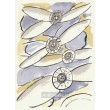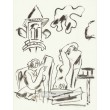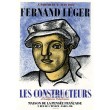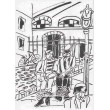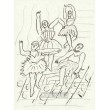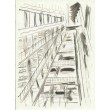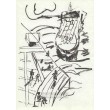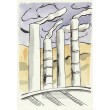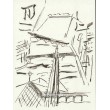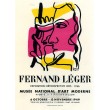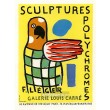Košík
0
x
Produkty
(prázdný)
Žádné díla
Bude determinováno
Dopravné a balné
0 Kč
Celkem
Produkt byl úspěšně přidán do nákupního košíku
Počet
Celkem
0 ks zboží.
1 dílo v košíku.
Za díla:
Doručení a balné:
Bude determinováno
Celkem
Kategorie
- grafiky/tisky
- obrazy
- kresby
- plakáty
- fotografie
- exlibris
- bibliofilie
- knihy/katalogy
- starožitnosti
- sochy/plastiky
- sklo
-
Hnutí
- abstrakce
- art-deco
- čs.avantgarda/moderna
- expresionismus
- fauvismus
- impresionismus
- kubismus
- naivní umění
- op-art
- poetismus
- pop-art
- realismus
- secese
- sociální kritika
- soudobá tvorba
- surrealismus
- světová avantgarda/moderna
- Škola prof. Albína Brunovského
- Škola prof. Zdeňka Sklenáře
- Škola prof.Julia Mařáka - mařákovci
- Žánr
- Zprávy/NEWS
- Doporučujeme
-

Le Ciel bleu (1962), opus 142
3 872 Kč -60% 9 680 Kč
Hnutí
- abstrakce
- art-deco
- čs.avantgarda/moderna
- expresionismus
- fauvismus
- impresionismus
- kubismus
- naivní umění
- op-art
- poetismus
- pop-art
- realismus
- secese
- sociální kritika
- soudobá tvorba
- surrealismus
- světová avantgarda/moderna
- Škola prof. Albína Brunovského
- Škola prof. Zdeňka Sklenáře
- Škola prof.Julia Mařáka - mařákovci
Žánr
NEJŽÁDANĚJŠÍ UMĚLCI
- Anderle Jiří
- Augustovič Peter
- Benca Igor
- Beneš Karel
- Bím Tomáš
- Born Adolf
- Brun Robert
- Brunovský Albín
- Boštík Václav
- Bouda Cyril
- Bouda Jiří
- Braque Georges
- Brázda Jiří
- Buffet Bernard
- Cézanne Paul
- Čapek Josef
- Čápová Hana
- Dalí Salvador
- Demel Karel
- Dudek Josef
- Dufy Raoul
- Effel Jean
- Felix Karol
- Filla Emil
- Giacometti Alberto
- Grosz George
- Chagall Marc
- Istler Josef
- Janeček Ota
- Jiřincová Ludmila
- Kandinsky Wassily
- Kĺúčik Peter
- Komárek Vladimír
- Kulhánek Oldřich
- Kupka František
- Lada Josef
- Lhoták Kamil
- Matisse Henri
- Miró Joan
- Mucha Alfons
- Muzika František
- Picasso Pablo
- Pileček Jindřich
- Reynek Bohuslav
- Sukdolák Pavel
- Suchánek Vladimír
- Svolinský Karel
- Šíma Josef
- Špála Václav
- Švabinský Max
- Švengsbír Jiří
- Tichý František
- Toulouse-Lautrec Henri de
- Toyen
- Trnka Jiří
- Váchal Josef
- Vik Karel
- Warhol Andy
- Zábranský Vlastimil
- Zoubek Olbram
- Zrzavý Jan
Seznam děl umělce Léger Fernand
(*4.2.1881–†17.8.1955) francouzský malíř vycházející z kubismu. Jeho dekorativně výtvarný projev, využívající barevné kontrasty figurálních kompozic, architektonických a mechanických elementů, vyjadřuje monumentální formou dynamiku moderního světa.
Auto
(*4.2.1881–†17.8.1955) francouzský malíř vycházející z kubismu. Jeho dekorativně výtvarný projev, využívající barevné kontrasty figurálních kompozic, architektonických a mechanických elementů, vyjadřuje monumentální formou dynamiku moderního světa.
Autor nástěnných maleb (hlavní sál OSN v New Yorku), mozaik, keramiky, vitrailí, tapisérií a scénografických návrhů
Léger Fernand (leže), *1881 v Argentanu, fr. malíř. Malířsky začal v plejadě kubistické školy a jako jeden z mála dospěl k vlastnímu pojetí kubismu jako dobového výrazu mechanické a strojové kultury. Proto je nejdůležitější složkou jeho obrazu mechanická forma a obraz je vůbec chápán jako konstrukce a montáž jednotlivých součástí. Tento charakter obrazu vystupuje na povrch zejména po válce, kdy se tvar, dříve analysovaný, spojil v souvislý celek chápaný abstraktně ve smyslu standardu. Ozvuk poválečného neoklasicismu obrátil [Léger Fernand]-ovu pozornost i k figuře, ale i ji chápe jako stroj. montovaný ze součástek. Od r. 1927 pod vlivem obsahového zájmu, který dal vznik nadrealismu, vniká do obrazu nová složka: metafora. Ani tentokrát neustoupí však [Léger Fernand]. od své strojovosti a snaží se ji uplatnit v jednotlivostech, musí-li slevit z inženýrské montáže celku. Abstraktní objektivita dává celému dílu ornamentální ráz a [Léger Fernand]. se praktickému využití svého sklonu nevyhýbal, jak dokazují jeho div. výpravy i nástěnné malby. Odtud vyplývá i jeho vliv na typografii; pokus o bezpředmětný film je už věcí experimentátora, který měl vliv na všechny tendence směřující k čiré abstrakci (zejm. v Hol., Něm. a Rus.). Srv. Fr. Kovárna, Současné malířství 1930, Edouard-Joseph, Dict. biogr. des artistes cont. I I. 1931. -rna.
(In: Ottův slovník naučný nové doby)
(1881-1955) French painter. He was originally trained as an architect's draughtsman and photographic retoucher. Having failed the entrance exam to the Ecole des Beaux-Arts in 1903, he studied at the Ecole des Arts Decoratifs and the Academie Julian. In 1909 he ranked as one of the three major Cubists and became a member of the Puteaux group in 1911. He was the first of the Cubists to experiment with non-figurative abstraction, contrasting curvilinear forms against a rectilinear grid.
He renounced abstraction during the First World War, when he claims to have discovered the beauty of common objects, which he described as 'everyday poetic images'. He began painting in a clean and precise style, in which objects are defined in their simplest terms in bold colours, taking cityscape and machine parts as his subject matter. In 1924 he made a 'film without scenario', Ballet Mecanique, in which he contrasted machines and inanimate objects with humans and their body parts.
During the Second World War, Léger lived in the USA where he taught at Yale, returning to Paris in 1945, when he opened an academy. His large paintings celebrating the people, featuring acrobats, cyclists and builders, thickly contoured and painted in clear, flat colours, reflected his political interest in the working class, and his attempt to create accessible art. From 1946 to 1949 he worked on a mosaic for the facade of the church at Assy, produced windows and tapestries for the church at Ardincourt in 1951, as well as windows for the University of Caracas in 1954. In 1950 he founded a ceramics studio at Biot, which, in 1957, became the Léger Museum. In 1967 it became a national museum. Léger was one of the giants of French painting this century, whose influence has been almost as great as his reputation.
- From "The Bulfinch Guide to Art History"
The following review of the Léger retrospective held at the Museum of Modern Art in 1998 was written by Dr. Francis V. O’Connor, Editor, O’CONNOR’S PAGE.
I do not like Fernand Léger.
Thanks to MoMA's good enough exhibition, I have been able to come to this judgment of an artist, whose last major show in New York was in 1953, and whose work has been seen around piecemeal ever since. So I never saw enough to form an opinion. I did read Alfred Barr's famous put-down about Léger being a noisy artist chasing fire engines, the business about him being a champion of the machine, and the clever mot about "Tubism." Now these eighty objects (the twenty drawings included are calmer and more elegant), are all lined up for inspection, and the paintings have earned their demerits -- in my eye at least.
First off, I think Barr was right; the visual noise from the walls of this exhibits rivals that of several recent shows at MoMA and elsewhere about town, of contemporary junk blaring actual noise from recordings and videos (vide Viola at the Whitney). Léger's noise is worse, in that it rivals that felt in the eye of the French poet and art critic Charles Baudelaire by a red and green awning opposite his window. Yet even the old Op Artists were tolerable in their optical vibrancy, whereas Léger is relentless, vulgar and visually debilitating. Further, the show is packed into MoMA's downstairs galleries, where each painting can hardly be seen without its neighbors lending their din. This is the kind of work that needs room -- but even spatial soundproofing would not redeem these ranks of visually cacophonous disasters.
As for Léger being an artist of the Machine Age, celebrating the rise of our century's technology, I'll take Picabia, Sheeler and Diego Rivera any day. If Léger managed to get the roar of the factory, the squeal of a drill press, and the screech of the unoiled gear, into his paintings, it was an achievement I, at least, do not much appreciate. Going through the River Rouge auto plants when I was working on an essay about Rivera's murals of the Ford assembly line for the Detroit Institute of Arts' retrospective, revealed those vibrant old factories as far more organic and chthonic, if not downright hellish, than Léger's fantasies of the worker's environment, where everything is neat primary colors -- and the rust, heat, grunge and quaking are totally absent.
Further, the essence of a machine is its interconnectedness: one part relates to the other, and all the parts join to perform an action that is specific and useful. If you look carefully at any Léger, you see immediately that it is an extremely complex, but fundamentally unintegrated, pattern. Nothing really connects to anything else--not even arms and legs!
As for "Tubism" and its relation to Cubism, it is too bad that he did not stay with the latter. The 1911 works influenced by the Cubists are superb. But he does not develop these marvelous paintings; rather he grew more raucous and colorful--and noisy. By c. 1914 he is deafeningly insufferable. His motif for this visual noise starts early and these works all contain a formal complex that he used over and over throughout his career -- a balancing act of small, tightly clustered forms countering large, expansive, planar forms. Early on these consisted of hands and their rows of fingers. Later, there are steps, grills, stripes, smokestacks, girders, nets, ropes and so on. The rest of the works, all using this ingenious device for inducing visual static, are the most vulgar, loud, mechanomorphic junk I have ever seen.
These paintings are portraits of a singular chaos--and if all art is, on one level, self-portraiture, they say much about Léger that explains the overall failure of his art on any level other than irony. Indeed, if I were doing a psychodynamic study of Léger, I would start with the origins of that infinitely elaborated stacked finger motif -- not his much-touted infatuation with a cannon during World War I -- which is too simple an explanation for the personal etiology of these curious, pesky images.
But, if you think such stuff is "fun" -- or has "edge" -- or sounds like an exciting disco -- don't miss this visually annoying exhibit.
[This review was first published on February 15, 1998]
- ©1998, Dr. Francis V. O’Connor, Editor, O’CONNOR’S PAGE. Reproduced by permission.
In: http://artchive.com/artchive/L/Léger.html * * * * * 1881 Born: Argentan, France
1903 Ecole des Arts Décoratifs
1905 Académie Julian
1955 Died: Gif-sur-Yvette, France. (August 17th)
1955 Awarded Grand Prix from the Biennale de Sao Paulo. Brazil.
1960 The Musée Fernand Léger was inaugurated in Biot, France.
Fernand Léger was born in Argentan, France in 1881. He is associated with the Cubist movement and was an innovator in abstract art. Léger studied architecture and worked as an apprentice draughtsman in an architect's office. He later served in the Engineering Corps and became involved with stage and film design in Paris. By 1911 he had become friendly with Georges Braque and Pablo Picasso and had exhibited at the Salon des Independants.
Léger was prolific in many media and gained recognition as one of the most prominent artists in Paris in the first half of the 20th century. Besides being a painter, filmmaker and designer, Léger also became successful printmaker, experimenting with lithography. Léger's steady intention was to provide art for the people. His ideas and philosophy attracted many students in both Europe and the Americas. He always had a great interest in industrial evolution and its relationship to man. This became one of the central themes of his oeuvre. Léger continually experimented with color, shape, movement, and space. Geometric forms and elements of a machine culture (cranks, pistons, robots, etc.) were important motifs in his many creations.
In 1940, to escape German forces in Paris, Léger fled to the United States. The industrialism found in America heavily inspired his work of this period. While in the U.S., Léger taught at Yale University and at Mills College, California. Léger returned to France in 1945 and later in his life, he was awarded with many awards and exhibitions. Today his paintings and prints can be seen in prominent museums throughout the world.
Selected Exhibitions
1949 XXV Viennale de Venise. Venice, Italy.
1949 Retrospective. Musée National d'Art Moderne. Paris, France.
1937 Exposition Universelle. Paris, France.
1935 Art Insitute. Chicago, IL.
1935 MoMA New York, NY.
1928 Galerie Fleichteim. Berlin, Germany.
1925 Exhibition of the Arts Décoratifs. Paris, France.
In: http://www.artnet.com/artist/10305/fernand-leger.html
Fernand Léger was born in Argentan, France. His father, a cattle breeder, died when Léger was very young. After trying out different art schools, Léger went to work at an architectural firm.
Living in Paris as of 1900, Léger would quickly turn to Cubism. With Villon, Cleizes, Kupka, Picabia and Delaunay, Léger would become a founder of the Section d’Or, the French branch of the Cubism movement. Their philosophy generated works based on geometric shapes and vivid colors.
Léger would fall prey to tear gas during World War I and his injuries would plunge him into apathy.
In 1920, he befriended Le Corbusier and worked with the architect on some of his projects. As with many up and coming artists, Léger left France for America during World War II and studied at Yale. The movie industry, as well as ceramic and decorative art, is all part of his artistic genius. His paintings, easily recognized with their large compositions, light colors and “tube” shapes are “so many hymns praising all things mechanical, the world of labor and social conquests”. A committed artist, Léger died in 1954.
A large retrospective was devoted to his work at the Beaubourg Center for Fine Art in 1997.
1955, Documenta I
Allemagne, Cassel
1955, Mort de Fernand LEGER
1956, Rétrospective Fernand LEGER
France, Paris, Musée des Arts Décoratifs
1959, 1ère Biennale de Paris
France, Paris, Musée d'art moderne de la ville de Paris
1959, Documenta II
Allemagne, Cassel
1964, Documenta III
Allemagne, Cassel
1968, Roger GARAUDY: Pour un réalisme du XXe siècle
1981, Exposition Fernand LEGER, La poésie de l'objet 1928-1934
France, Paris, Centre Georges Pompidou / Mnam - Galeries contemporaines et Forum, expositions individuelles
1985, Exposition. L'Art et le Temps. Regards sur la quatrième dimension
France, Villeurbanne, Le Nouveau Musée/Institut
1987, Les Cahiers du musée national d'art moderne, n°19-20, juin 1987: Moderne, modernité, modernisme
1990, Rétrospective Fernand LEGER
France, Villeneuve d'Ascq, Musée d'art moderne
1992, Françoise WASSERMAN et Marie-Odile de BARY, direction, Vagues, une anthologie de la nouvelle muséologie, vol. I.
1995, Biennale de Venise
Italie, Venise
1997, Exposition Made in France 1947-1997, 50 ans de création en France.
France, Paris, Centre Georges Pompidou / Mnam
1997, Exposition Masterworks from the Florene May Schoenborn Bequest
USA, New York, Museum of Modern Art
1997, Exposition Objects of Desire: The Modern Still Life
USA, New York, Museum of Modern Art
1997, Exposition. Encounters with Modern Art: Works from the Rothschild Family Collections
USA, San Francisco Museum of Modern Art
1997, Fernand LEGER, rétrospective
France, Paris, Centre Georges Pompidou / Mnam - Grande Galerie
1998, Exposition Fernand LEGER
USA, New York, Museum of Modern Art
1998, Exposition Le Décoratif dans l'art du XX siècle
France, Villeneuve d'Ascq, Musée d'art moderne
1998, Exposition. Fernand LEGER, 1905-1930. Collection du Centre Georges Pompidou, Musée national d'art moderne
France, Biot (06), Musée national Fernand Léger
1998, Exposition. Max BECKMANN und Paris
Suisse, Zürich, Kunsthaus
1998, Exposition. Rendez vous: Masterpieces from the Centre Georges Pompidou and the Guggenheim Museums
USA, New York, Guggenheim Museum
1998, Exposition. The Spirit of Cubism
Grande-Bretagne, Liverpool, Tate Gallery
1998, Exposition. Three Collectors: Solomon R.Guggenheim, Peggy Guggenheim and Gianni Mattioli
Italie, Venise, Peggy Guggenheim Collection
1999, Exposition. Georges Pompidou et la modernité
France, Paris, Galerie nationale du Jeu de Paume
http://www.operagallery.com/artist/LEGER_446;0;0.aspx
Léger, Fernand (1881-1955), French painter, who influenced Cubism, Constructivism, and the modern commercial poster and other types of applied art. Born in Argentan, France, he served a two-year architecture apprenticeship in Caen, and later studied unofficially under two professors at the École des Beaux-Arts in Paris. From 1910 he was a prominent exhibitor and member of the Salon des Indépendants. Most of his early pictures were Cubist in character, as in Nudes in the Forest (1909-1910, Kröller-Müller Museum, Otterlo). Along with Georges Braque and Pablo Picasso, Léger played an important role in the development and spread of Cubism.
Léger's subsequent work was influenced by his experiences in World War I. He began to use many symbols from the industrial world and attempted to depict his objects and people in machine-like forms. The City (1919, Philadelphia Museum of Art) is one of his most notable paintings. Léger's work had an important influence on Neo-Plasticism in the Netherlands and Constructivism in the former Soviet Union. He was highly successful as a glass painter, sculptor, mosaicist, ceramicist, and tapestry designer. The modern commercial poster and other types of applied art were also influenced by his original designs.
In his late paintings, Léger separated colour from his figures, which, while they retained their robot-like shapes, were painted in black lines. The colour was then boldly laid over areas of the canvas to form a separate composition that tied the entire painting together. The Great Parade (1954, Guggenheim Museum, New York), one of his last paintings, is a monumental example of this original style.
In: MS Encarta
Joseph Fernand Henri Léger was born February 4, 1881, in Argentan, France. After apprenticing with an architect in Caen from 1897 to 1899, Léger settled in Paris in 1900 and supported himself as an architectural draftsman. He was refused entrance to the Ecole des Beaux-Arts but nevertheless attended classes there beginning in 1903; he also studied at the Académie Julian. Léger’s earliest known works, which date from 1905, were primarily influenced by Impressionism. The experience of seeing the Paul Cézanne retrospective at the Salon d’Automne in 1907 and his contact with the early Cubism of Pablo Picasso and Georges Braque had an extremely significant impact on the development of his personal style. From 1911 to 1914, Léger’s work became increasingly abstract, and he started to limit his color to the primaries and black and white. In 1912, he was given his first solo show at Galerie Kahnweiler, Paris.
Léger served in the military from 1914 to 1917. His “mechanical” period, in which figures and objects are characterized by tubular, machinelike forms, began in 1917. During the early 1920s, he collaborated with the writer Blaise Cendrars on films and designed sets and costumes for performances by Rolf de Maré’s Ballets Suédois; in 1924, he completed his first film without a plot, Ballet mécanique. Léger opened an atelier with Amédée Ozenfant in 1924 and in 1925 presented his first murals at Le Corbusier’s Pavillon de l’Esprit Nouveau at the Exposition internationale des arts décoratifs. In 1931, he visited the United States for the first time. In 1935, the Museum of Modern Art, New York, and the Art Institute of Chicago presented an exhibition of his work. Léger lived in the United States from 1940 to 1945 but returned to France after the war. In the decade before his death, Léger’s wide-ranging projects included book illustrations, monumental figure paintings and murals, stained-glass windows, mosaics, polychrome ceramic sculptures, and set and costume designs. In 1955, he won the Grand Prize at the São Paulo Bienal. Léger died August 17 of that year, at his home in Gif-sur-Yvette, France. The Musée Fernand Léger was inaugurated in 1960 in Biot, France.
In: http://www.georgetownframeshoppe.com/fernand_leger_biography.html
Zobrazit
Autor nástěnných maleb (hlavní sál OSN v New Yorku), mozaik, keramiky, vitrailí, tapisérií a scénografických návrhů
Léger Fernand (leže), *1881 v Argentanu, fr. malíř. Malířsky začal v plejadě kubistické školy a jako jeden z mála dospěl k vlastnímu pojetí kubismu jako dobového výrazu mechanické a strojové kultury. Proto je nejdůležitější složkou jeho obrazu mechanická forma a obraz je vůbec chápán jako konstrukce a montáž jednotlivých součástí. Tento charakter obrazu vystupuje na povrch zejména po válce, kdy se tvar, dříve analysovaný, spojil v souvislý celek chápaný abstraktně ve smyslu standardu. Ozvuk poválečného neoklasicismu obrátil [Léger Fernand]-ovu pozornost i k figuře, ale i ji chápe jako stroj. montovaný ze součástek. Od r. 1927 pod vlivem obsahového zájmu, který dal vznik nadrealismu, vniká do obrazu nová složka: metafora. Ani tentokrát neustoupí však [Léger Fernand]. od své strojovosti a snaží se ji uplatnit v jednotlivostech, musí-li slevit z inženýrské montáže celku. Abstraktní objektivita dává celému dílu ornamentální ráz a [Léger Fernand]. se praktickému využití svého sklonu nevyhýbal, jak dokazují jeho div. výpravy i nástěnné malby. Odtud vyplývá i jeho vliv na typografii; pokus o bezpředmětný film je už věcí experimentátora, který měl vliv na všechny tendence směřující k čiré abstrakci (zejm. v Hol., Něm. a Rus.). Srv. Fr. Kovárna, Současné malířství 1930, Edouard-Joseph, Dict. biogr. des artistes cont. I I. 1931. -rna.
(In: Ottův slovník naučný nové doby)
(1881-1955) French painter. He was originally trained as an architect's draughtsman and photographic retoucher. Having failed the entrance exam to the Ecole des Beaux-Arts in 1903, he studied at the Ecole des Arts Decoratifs and the Academie Julian. In 1909 he ranked as one of the three major Cubists and became a member of the Puteaux group in 1911. He was the first of the Cubists to experiment with non-figurative abstraction, contrasting curvilinear forms against a rectilinear grid.
He renounced abstraction during the First World War, when he claims to have discovered the beauty of common objects, which he described as 'everyday poetic images'. He began painting in a clean and precise style, in which objects are defined in their simplest terms in bold colours, taking cityscape and machine parts as his subject matter. In 1924 he made a 'film without scenario', Ballet Mecanique, in which he contrasted machines and inanimate objects with humans and their body parts.
During the Second World War, Léger lived in the USA where he taught at Yale, returning to Paris in 1945, when he opened an academy. His large paintings celebrating the people, featuring acrobats, cyclists and builders, thickly contoured and painted in clear, flat colours, reflected his political interest in the working class, and his attempt to create accessible art. From 1946 to 1949 he worked on a mosaic for the facade of the church at Assy, produced windows and tapestries for the church at Ardincourt in 1951, as well as windows for the University of Caracas in 1954. In 1950 he founded a ceramics studio at Biot, which, in 1957, became the Léger Museum. In 1967 it became a national museum. Léger was one of the giants of French painting this century, whose influence has been almost as great as his reputation.
- From "The Bulfinch Guide to Art History"
The following review of the Léger retrospective held at the Museum of Modern Art in 1998 was written by Dr. Francis V. O’Connor, Editor, O’CONNOR’S PAGE.
I do not like Fernand Léger.
Thanks to MoMA's good enough exhibition, I have been able to come to this judgment of an artist, whose last major show in New York was in 1953, and whose work has been seen around piecemeal ever since. So I never saw enough to form an opinion. I did read Alfred Barr's famous put-down about Léger being a noisy artist chasing fire engines, the business about him being a champion of the machine, and the clever mot about "Tubism." Now these eighty objects (the twenty drawings included are calmer and more elegant), are all lined up for inspection, and the paintings have earned their demerits -- in my eye at least.
First off, I think Barr was right; the visual noise from the walls of this exhibits rivals that of several recent shows at MoMA and elsewhere about town, of contemporary junk blaring actual noise from recordings and videos (vide Viola at the Whitney). Léger's noise is worse, in that it rivals that felt in the eye of the French poet and art critic Charles Baudelaire by a red and green awning opposite his window. Yet even the old Op Artists were tolerable in their optical vibrancy, whereas Léger is relentless, vulgar and visually debilitating. Further, the show is packed into MoMA's downstairs galleries, where each painting can hardly be seen without its neighbors lending their din. This is the kind of work that needs room -- but even spatial soundproofing would not redeem these ranks of visually cacophonous disasters.
As for Léger being an artist of the Machine Age, celebrating the rise of our century's technology, I'll take Picabia, Sheeler and Diego Rivera any day. If Léger managed to get the roar of the factory, the squeal of a drill press, and the screech of the unoiled gear, into his paintings, it was an achievement I, at least, do not much appreciate. Going through the River Rouge auto plants when I was working on an essay about Rivera's murals of the Ford assembly line for the Detroit Institute of Arts' retrospective, revealed those vibrant old factories as far more organic and chthonic, if not downright hellish, than Léger's fantasies of the worker's environment, where everything is neat primary colors -- and the rust, heat, grunge and quaking are totally absent.
Further, the essence of a machine is its interconnectedness: one part relates to the other, and all the parts join to perform an action that is specific and useful. If you look carefully at any Léger, you see immediately that it is an extremely complex, but fundamentally unintegrated, pattern. Nothing really connects to anything else--not even arms and legs!
As for "Tubism" and its relation to Cubism, it is too bad that he did not stay with the latter. The 1911 works influenced by the Cubists are superb. But he does not develop these marvelous paintings; rather he grew more raucous and colorful--and noisy. By c. 1914 he is deafeningly insufferable. His motif for this visual noise starts early and these works all contain a formal complex that he used over and over throughout his career -- a balancing act of small, tightly clustered forms countering large, expansive, planar forms. Early on these consisted of hands and their rows of fingers. Later, there are steps, grills, stripes, smokestacks, girders, nets, ropes and so on. The rest of the works, all using this ingenious device for inducing visual static, are the most vulgar, loud, mechanomorphic junk I have ever seen.
These paintings are portraits of a singular chaos--and if all art is, on one level, self-portraiture, they say much about Léger that explains the overall failure of his art on any level other than irony. Indeed, if I were doing a psychodynamic study of Léger, I would start with the origins of that infinitely elaborated stacked finger motif -- not his much-touted infatuation with a cannon during World War I -- which is too simple an explanation for the personal etiology of these curious, pesky images.
But, if you think such stuff is "fun" -- or has "edge" -- or sounds like an exciting disco -- don't miss this visually annoying exhibit.
[This review was first published on February 15, 1998]
- ©1998, Dr. Francis V. O’Connor, Editor, O’CONNOR’S PAGE. Reproduced by permission.
In: http://artchive.com/artchive/L/Léger.html * * * * * 1881 Born: Argentan, France
1903 Ecole des Arts Décoratifs
1905 Académie Julian
1955 Died: Gif-sur-Yvette, France. (August 17th)
1955 Awarded Grand Prix from the Biennale de Sao Paulo. Brazil.
1960 The Musée Fernand Léger was inaugurated in Biot, France.
Fernand Léger was born in Argentan, France in 1881. He is associated with the Cubist movement and was an innovator in abstract art. Léger studied architecture and worked as an apprentice draughtsman in an architect's office. He later served in the Engineering Corps and became involved with stage and film design in Paris. By 1911 he had become friendly with Georges Braque and Pablo Picasso and had exhibited at the Salon des Independants.
Léger was prolific in many media and gained recognition as one of the most prominent artists in Paris in the first half of the 20th century. Besides being a painter, filmmaker and designer, Léger also became successful printmaker, experimenting with lithography. Léger's steady intention was to provide art for the people. His ideas and philosophy attracted many students in both Europe and the Americas. He always had a great interest in industrial evolution and its relationship to man. This became one of the central themes of his oeuvre. Léger continually experimented with color, shape, movement, and space. Geometric forms and elements of a machine culture (cranks, pistons, robots, etc.) were important motifs in his many creations.
In 1940, to escape German forces in Paris, Léger fled to the United States. The industrialism found in America heavily inspired his work of this period. While in the U.S., Léger taught at Yale University and at Mills College, California. Léger returned to France in 1945 and later in his life, he was awarded with many awards and exhibitions. Today his paintings and prints can be seen in prominent museums throughout the world.
Selected Exhibitions
1949 XXV Viennale de Venise. Venice, Italy.
1949 Retrospective. Musée National d'Art Moderne. Paris, France.
1937 Exposition Universelle. Paris, France.
1935 Art Insitute. Chicago, IL.
1935 MoMA New York, NY.
1928 Galerie Fleichteim. Berlin, Germany.
1925 Exhibition of the Arts Décoratifs. Paris, France.
In: http://www.artnet.com/artist/10305/fernand-leger.html
Fernand Léger was born in Argentan, France. His father, a cattle breeder, died when Léger was very young. After trying out different art schools, Léger went to work at an architectural firm.
Living in Paris as of 1900, Léger would quickly turn to Cubism. With Villon, Cleizes, Kupka, Picabia and Delaunay, Léger would become a founder of the Section d’Or, the French branch of the Cubism movement. Their philosophy generated works based on geometric shapes and vivid colors.
Léger would fall prey to tear gas during World War I and his injuries would plunge him into apathy.
In 1920, he befriended Le Corbusier and worked with the architect on some of his projects. As with many up and coming artists, Léger left France for America during World War II and studied at Yale. The movie industry, as well as ceramic and decorative art, is all part of his artistic genius. His paintings, easily recognized with their large compositions, light colors and “tube” shapes are “so many hymns praising all things mechanical, the world of labor and social conquests”. A committed artist, Léger died in 1954.
A large retrospective was devoted to his work at the Beaubourg Center for Fine Art in 1997.
1955, Documenta I
Allemagne, Cassel
1955, Mort de Fernand LEGER
1956, Rétrospective Fernand LEGER
France, Paris, Musée des Arts Décoratifs
1959, 1ère Biennale de Paris
France, Paris, Musée d'art moderne de la ville de Paris
1959, Documenta II
Allemagne, Cassel
1964, Documenta III
Allemagne, Cassel
1968, Roger GARAUDY: Pour un réalisme du XXe siècle
1981, Exposition Fernand LEGER, La poésie de l'objet 1928-1934
France, Paris, Centre Georges Pompidou / Mnam - Galeries contemporaines et Forum, expositions individuelles
1985, Exposition. L'Art et le Temps. Regards sur la quatrième dimension
France, Villeurbanne, Le Nouveau Musée/Institut
1987, Les Cahiers du musée national d'art moderne, n°19-20, juin 1987: Moderne, modernité, modernisme
1990, Rétrospective Fernand LEGER
France, Villeneuve d'Ascq, Musée d'art moderne
1992, Françoise WASSERMAN et Marie-Odile de BARY, direction, Vagues, une anthologie de la nouvelle muséologie, vol. I.
1995, Biennale de Venise
Italie, Venise
1997, Exposition Made in France 1947-1997, 50 ans de création en France.
France, Paris, Centre Georges Pompidou / Mnam
1997, Exposition Masterworks from the Florene May Schoenborn Bequest
USA, New York, Museum of Modern Art
1997, Exposition Objects of Desire: The Modern Still Life
USA, New York, Museum of Modern Art
1997, Exposition. Encounters with Modern Art: Works from the Rothschild Family Collections
USA, San Francisco Museum of Modern Art
1997, Fernand LEGER, rétrospective
France, Paris, Centre Georges Pompidou / Mnam - Grande Galerie
1998, Exposition Fernand LEGER
USA, New York, Museum of Modern Art
1998, Exposition Le Décoratif dans l'art du XX siècle
France, Villeneuve d'Ascq, Musée d'art moderne
1998, Exposition. Fernand LEGER, 1905-1930. Collection du Centre Georges Pompidou, Musée national d'art moderne
France, Biot (06), Musée national Fernand Léger
1998, Exposition. Max BECKMANN und Paris
Suisse, Zürich, Kunsthaus
1998, Exposition. Rendez vous: Masterpieces from the Centre Georges Pompidou and the Guggenheim Museums
USA, New York, Guggenheim Museum
1998, Exposition. The Spirit of Cubism
Grande-Bretagne, Liverpool, Tate Gallery
1998, Exposition. Three Collectors: Solomon R.Guggenheim, Peggy Guggenheim and Gianni Mattioli
Italie, Venise, Peggy Guggenheim Collection
1999, Exposition. Georges Pompidou et la modernité
France, Paris, Galerie nationale du Jeu de Paume
http://www.operagallery.com/artist/LEGER_446;0;0.aspx
Léger, Fernand (1881-1955), French painter, who influenced Cubism, Constructivism, and the modern commercial poster and other types of applied art. Born in Argentan, France, he served a two-year architecture apprenticeship in Caen, and later studied unofficially under two professors at the École des Beaux-Arts in Paris. From 1910 he was a prominent exhibitor and member of the Salon des Indépendants. Most of his early pictures were Cubist in character, as in Nudes in the Forest (1909-1910, Kröller-Müller Museum, Otterlo). Along with Georges Braque and Pablo Picasso, Léger played an important role in the development and spread of Cubism.
Léger's subsequent work was influenced by his experiences in World War I. He began to use many symbols from the industrial world and attempted to depict his objects and people in machine-like forms. The City (1919, Philadelphia Museum of Art) is one of his most notable paintings. Léger's work had an important influence on Neo-Plasticism in the Netherlands and Constructivism in the former Soviet Union. He was highly successful as a glass painter, sculptor, mosaicist, ceramicist, and tapestry designer. The modern commercial poster and other types of applied art were also influenced by his original designs.
In his late paintings, Léger separated colour from his figures, which, while they retained their robot-like shapes, were painted in black lines. The colour was then boldly laid over areas of the canvas to form a separate composition that tied the entire painting together. The Great Parade (1954, Guggenheim Museum, New York), one of his last paintings, is a monumental example of this original style.
In: MS Encarta
Joseph Fernand Henri Léger was born February 4, 1881, in Argentan, France. After apprenticing with an architect in Caen from 1897 to 1899, Léger settled in Paris in 1900 and supported himself as an architectural draftsman. He was refused entrance to the Ecole des Beaux-Arts but nevertheless attended classes there beginning in 1903; he also studied at the Académie Julian. Léger’s earliest known works, which date from 1905, were primarily influenced by Impressionism. The experience of seeing the Paul Cézanne retrospective at the Salon d’Automne in 1907 and his contact with the early Cubism of Pablo Picasso and Georges Braque had an extremely significant impact on the development of his personal style. From 1911 to 1914, Léger’s work became increasingly abstract, and he started to limit his color to the primaries and black and white. In 1912, he was given his first solo show at Galerie Kahnweiler, Paris.
Léger served in the military from 1914 to 1917. His “mechanical” period, in which figures and objects are characterized by tubular, machinelike forms, began in 1917. During the early 1920s, he collaborated with the writer Blaise Cendrars on films and designed sets and costumes for performances by Rolf de Maré’s Ballets Suédois; in 1924, he completed his first film without a plot, Ballet mécanique. Léger opened an atelier with Amédée Ozenfant in 1924 and in 1925 presented his first murals at Le Corbusier’s Pavillon de l’Esprit Nouveau at the Exposition internationale des arts décoratifs. In 1931, he visited the United States for the first time. In 1935, the Museum of Modern Art, New York, and the Art Institute of Chicago presented an exhibition of his work. Léger lived in the United States from 1940 to 1945 but returned to France after the war. In the decade before his death, Léger’s wide-ranging projects included book illustrations, monumental figure paintings and murals, stained-glass windows, mosaics, polychrome ceramic sculptures, and set and costume designs. In 1955, he won the Grand Prize at the São Paulo Bienal. Léger died August 17 of that year, at his home in Gif-sur-Yvette, France. The Musée Fernand Léger was inaugurated in 1960 in Biot, France.
In: http://www.georgetownframeshoppe.com/fernand_leger_biography.html
Fotografie
 |  |  |



